Fishing and Tying the Black Perdigon – Czech Nymph Style!
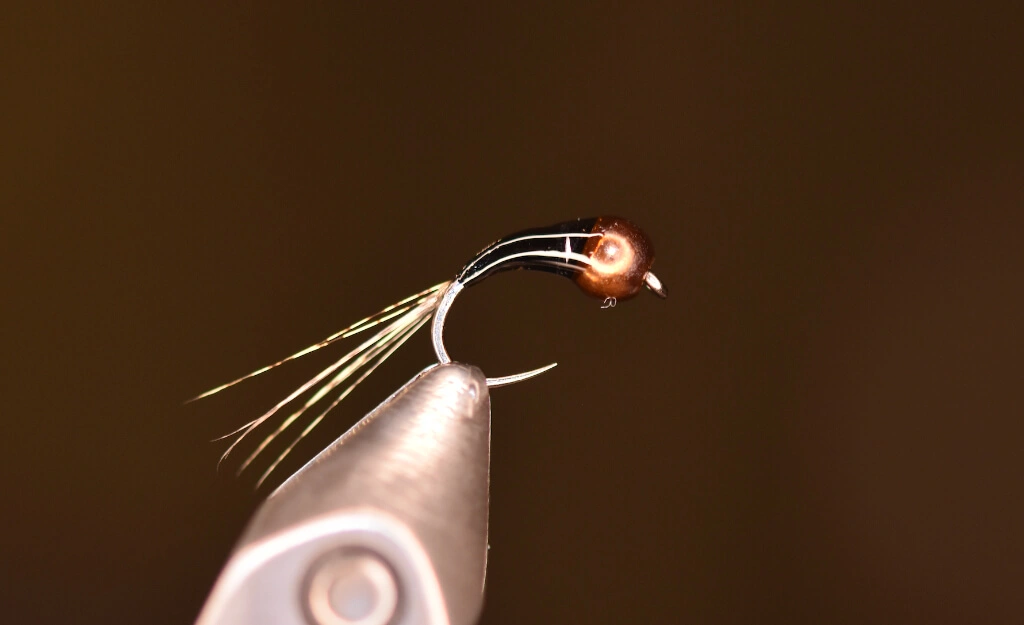
Several years ago, perusing through a fly tying group on social media, I saw a post by a woman looking for Coq de Leon (CDL) feathers. This was after Covid, I believe, when interest in the hobby spiked so much that all of a sudden almost every fly shop quickly ran out of certain materials, and some feathers, such as CDL, became very hard to find. In particular, Light Pardo CDL was almost impossible to locate in stores or online for quite a while because of its popularity as tailing feathers on nymphs.
Anyway, this woman on social media was a fly fishing guide in California and was tying up a bunch of nymphs for an event to honor veterans, and she needed a bunch of CDL. Fortunately, prior to Covid, I had bought a full cape of CDL in Light Pardo. It’s not as finely barred as the small tailing packs, but it’s quite a bit stiffer than other hackles, which makes it excellent for nymph tails. Figuring I’d never in my life tie enough nymphs to use a whole cape, I tore a third of it off and donated it to this woman in California.
A few weeks later, a package came in the mail from her with a note and a small box of flies. “Thank you for the CDL. These nymphs will catch a lot of fish for you.” In the box were a couple dozen nymphs, all Perdigon-style, in blue, hot pink, and black. I transferred them to my fishing fly box and promptly forgot about them for a couple years.
Fast forward to a miserable day on the Little Juniata River. Tough conditions. Windy, cold, driving rain. I threw everything at the trout and couldn’t get so much as a sniff. And then, that afternoon, I rediscovered those nymphs the woman had sent me, figured why not give them a try, and tied on the black one. She was right. Those nymphs caught me a lot of fish!
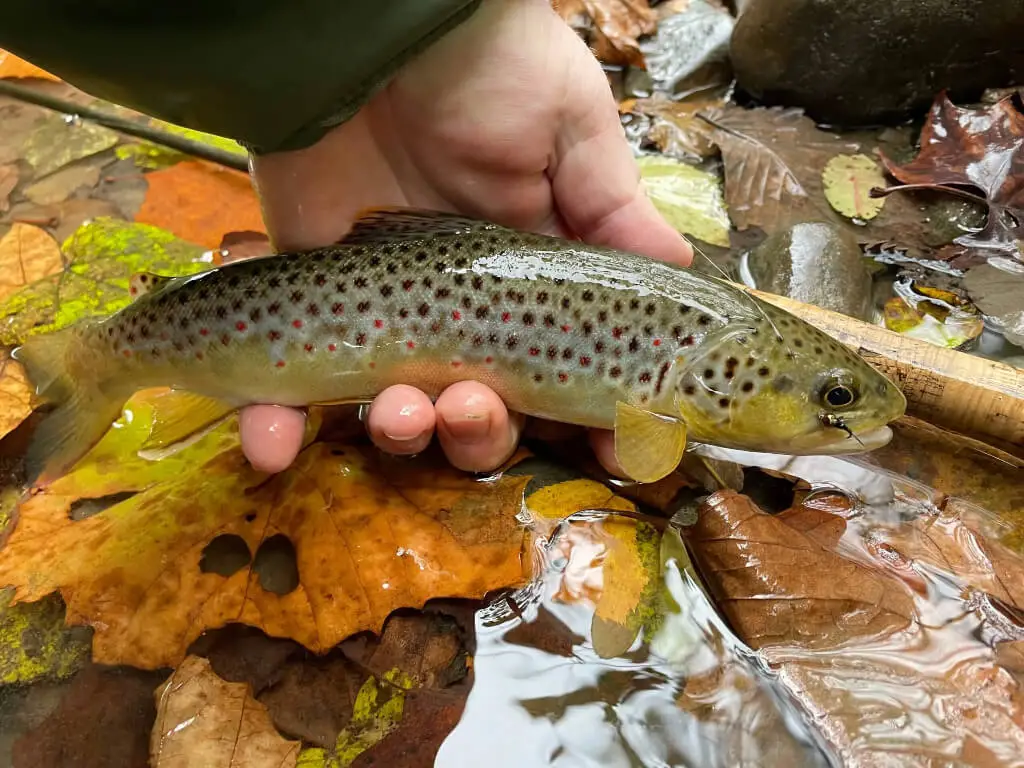
Fishing the Black Perdigon
Since that day, the Black Perdigon has been one of my top producing patterns, not only when Euro nymphing, but also for dropping under an indicator. Three reasons make it effective.
First, it’s weighted. Not only does it have a tungsten bead, but lead wire is also added to the hook shank prior to tying this pattern. Once the epoxy coating is added, the end result is a smooth, heavy fly that sinks like a rock.
Second, it’s tied on a Czech nymph/caddis-style hook, which provides a caddis pupa or midge pupa profile, and it’s black body make it a great Baetis nymph imitation, too. These are three of the most common insects found in waterways all across the country. Literally, this fly represents such a large cross-section of insects that it can be used effectively anywhere trout are found. It’s as much of a “guide fly” in California as it is in Pennsylvania!
Third, the color contrast of the brown bead with the black and then the Light Pardo CDL with the black are natural trigger points. They’re subtle, unlike the hot spots used in many Euro-style patterns, and certainly help this pattern produce more consistently in low, clear water as well as on highly-pressured streams and rivers.
Patterns that are heavy and general enough to represent a multitude of insects are qualities that make Perdigons so effective. It’s often been argued that a trout will eat almost anything if it’s presented properly. And the whole idea behind Perdigons is that they are meant to get down quickly to where the fish are and drift longer in the strike zone, and their design is general enough to represent countless food items. By all accounts, the Black Perdigon fits the bill!
Tying the Black Perdigon, Czech Nymph Style
The Black Perdigon is a very easy pattern to tie. The hardest part of the pattern is dealing with the resin, which can get sloppy if you use too much. Start with just a small amount so that it doesn’t run or drip down onto the hook point. If some does get on the hook point and is cured, use your fingernail to scrape it off. If left on the point, it can be enough to cause misses.
Fly Recipe
- Hook: Czech Nymph/Caddis in sizes 12-20
- Tungsten slotted or round bead in brown
- Lead wire: 0.015 wire
- Black 6/0 or 8/0 Thread
- Tail: Coq De Leon (CDL) in Light Pardo
- Body: Black thread
- Finish: Thick UV resin
Start by threading a brown tungsten bead onto the hook. The size/weight of the bead can be modified to suit your particular needs. If I’m tying a pattern to be used for bigger, deeper water, I’ll over-bead the hook, often using a 1/8 tungsten bead, along with 6-7 wraps of .015 wire, on a size 14 pattern, but for smaller streams, a 7/64 or 3/32 bead might be better suited. The bead used, though, could very well be determined by the model hook used, too. Every brand of hook is sized a little different. Some brands, such as Fulling Mill, typically run at least one size larger than most brands. In this particular tutorial, I’m using a Model 28 Czech Nymph/Caddis barbless hook and brown tungsten bead sold by Wholesale Fly Fishing.
Make 6 or 7 wraps of 0.015 lead wire onto the hook shank and push up into the slot behind the bead. Attach the thread just behind the wire on the hook shank and wrap over the wire enough to lock the wire into place.
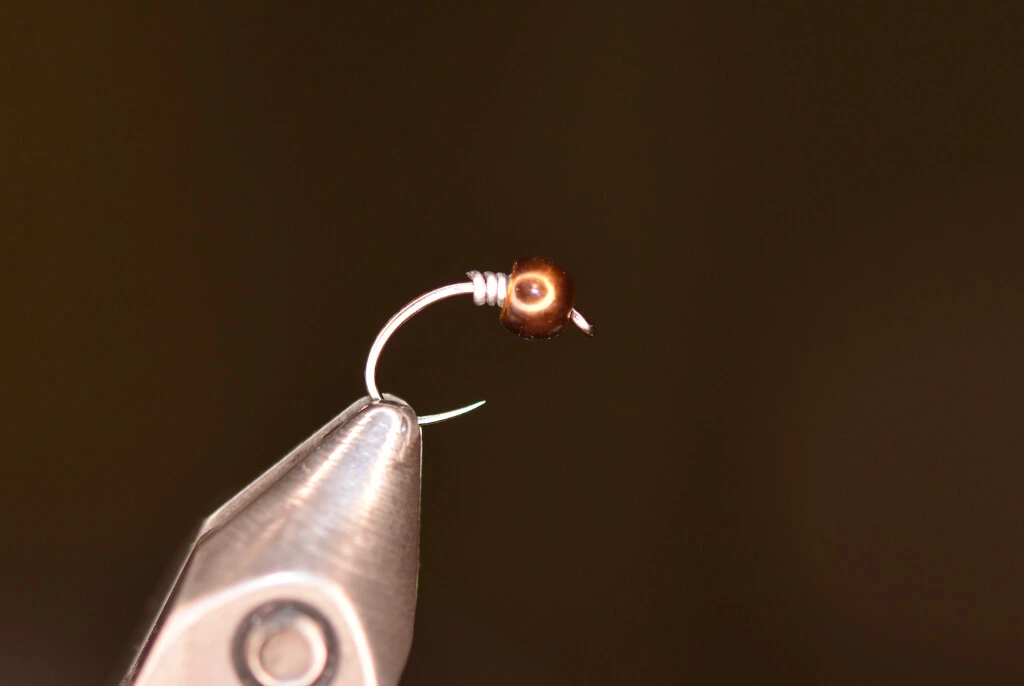
Strip off 5 or 6 fibers of CDL in Light Pardo to use as the tail. Generally, I prefer tails that are approximately one and a half hook gaps in length. Trim the butts of the fibers so that they rest against the edge of the wire and secure the tail into place.
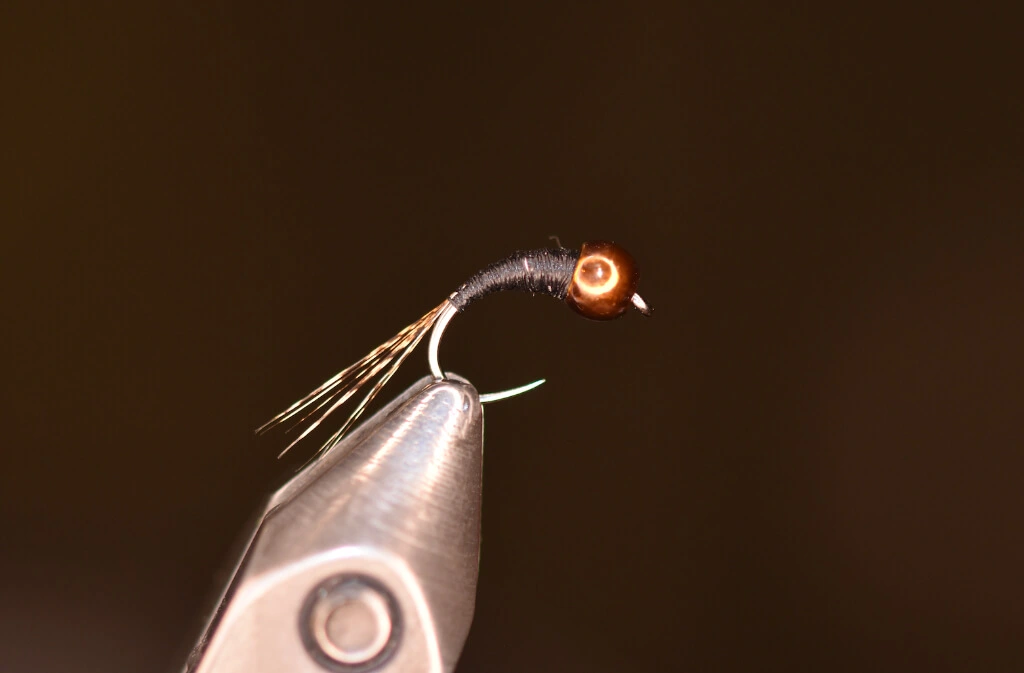
Next, create a thread body. One of the advantages of using a larger 6/0 thread is that you’ll be able to build the body faster. The body, though, doesn’t have to be perfectly smooth. You’re simply laying down an underbody that will soon be covered with resin. My nature is not to be too particular about these things. My main goal is to tie an effective pattern quickly so that I can spend less time filling my fly box and more time on the water. That said, the body should have a nice little taper to it, thin near the tail and gradually thickening to behind the bead. Once you are satisfied with the tapered thread body, do a couple half hitches and cut the thread.
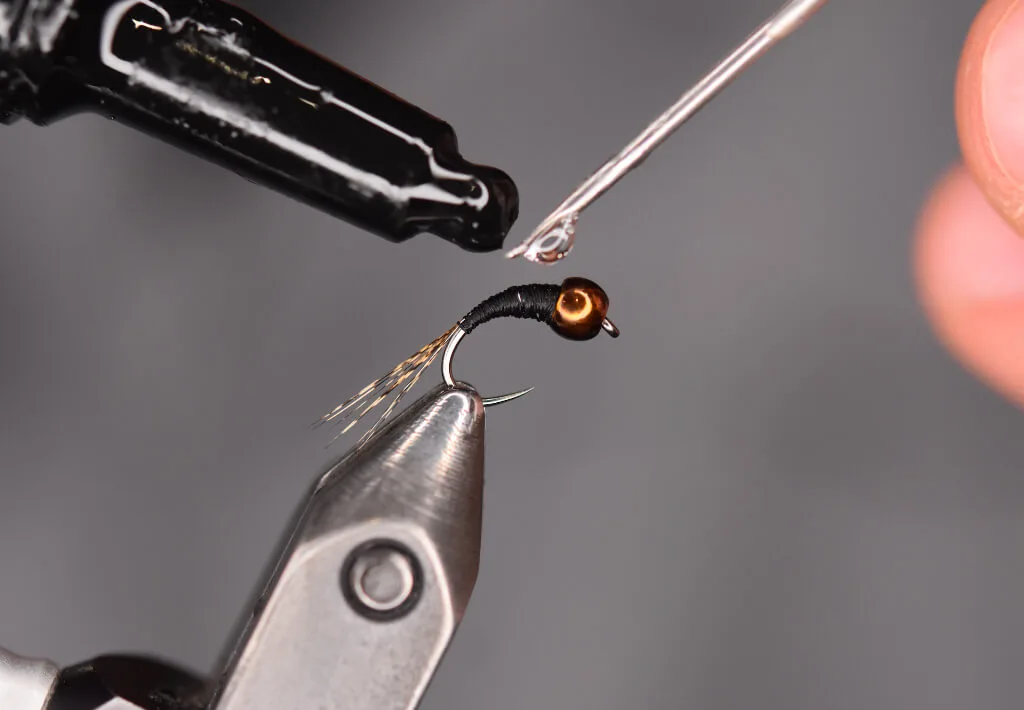
Finish the fly with a light coat of thick UV resin. Less is more when it comes to UV resin. Place a few drops on the thread body and use a bodkin to evenly distribute the resin over the fly, and then cure the resin with a UV light.
Last step, tie up a dozen more and add them to your box of confidence flies. But more importantly, don’t be like me and wait a couple of years to put them to use. This pattern catches fish. Everywhere.

Watch the Tying Tutorial for the Black Perdigon Tied Czech Nymph Style
Did You Find This Fly Tying Guide To be Helpful?
Stay up to date with the Dark Skies Fly Fishing monthly newsletter for free and receive the latest posts in fly fishing news, tricks, tips, and techniques, stream reports, as well as updates on new flies added to the Online Store and exclusive discounts!
Sign Up NowDownload our eBook "Confidence Flies: Volume One, Euro Nymphs" for free today when you sign up for our newsletter!
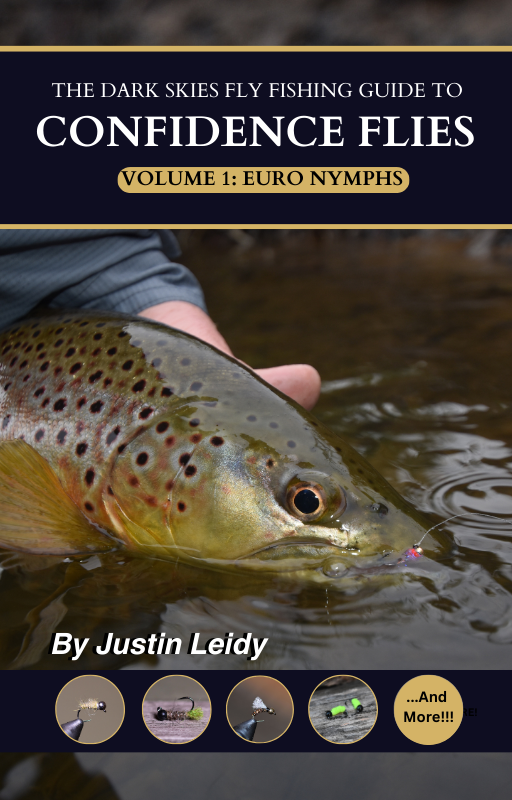
Have a fly fishing question you’d like answered? Drop us a line at info@darkskskiesflyfishing.com! If we use your question in a blog post or in the newsletter, we’ll send you a FREE fly box with a dozen of our favorite nymphs and dry flies!

Hi Ralph.
Greetings from Argyll, Scotland.
I just watched your tying video on the wee black perdigon. You made a braw job of the dressing. Very nice.
I’ve been sitting tying a perdigon that works great here in the Argyll hill lochs. It’s great on the point for pulling a cast out nice and straight on a long line. I like using perdigons in the lochs as wee sinkers to pull my cast down to the depth I want to explore. This one I like often catches more fish than the dropper flies.
Im going to tie up some of these wee black perdigons; on a Czech Nymph hook! That’s a great idea.
I’ll let you know how I get on.
Thanks for the video.
Slainte
Gregor. AyeFlies.
Thank you so much for your comment! Hope you find great success with this pattern on the Czech hook. Please post a pic of any good fish you catch!
Ralph